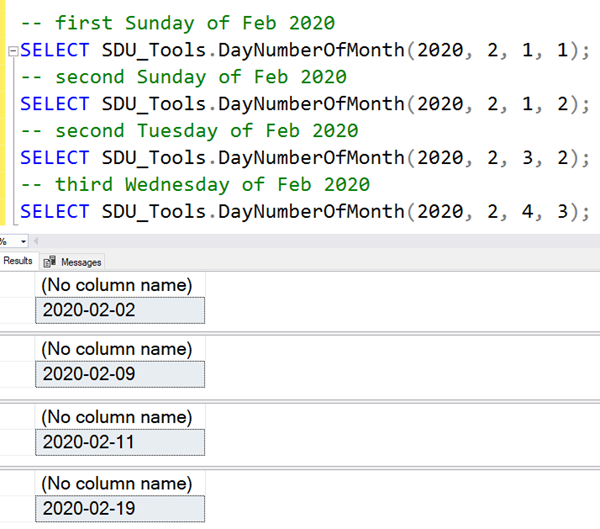SDU Tools: Calculate day number in a month in SQL Server T-SQL

I often need to calculate a day number in a month. For example, I need to work out the 3rd Tuesday of a month, or the 4th Friday, and so on. To make that easy, in our free SDU Tools for developers and DBAs, we added a tool to do just that. It’s a function called DayNumberOfMonth.
It’s a function that takes four parameters:
@Year is the year (of the month in question) @Month is month in question (as a number within a calendar year i.e. March = 3) @DayOfWeek is an integer with Sunday = 1, Monday = 2, etc. @DayNumber is also an integer for the day number (i.e. 3 for 3rd Monday)
You can use our tools as a set or as a great example of how to write functions like these.
Find out more
You can see it in action in the main image above, and in the video here:
Access to SDU Tools is one of the benefits of being an SDU Insider, along with access to our other free tools and eBooks. Please just visit here for more info:
http://sdutools.sqldownunder.com
2020-03-04

